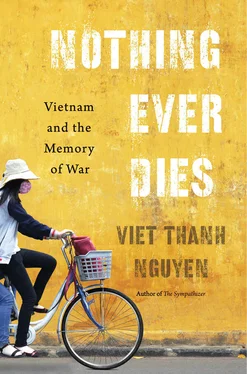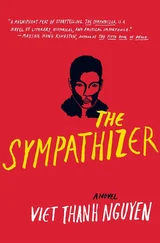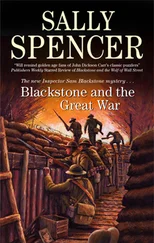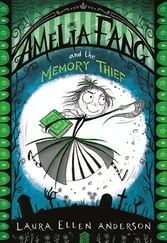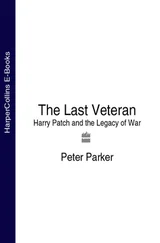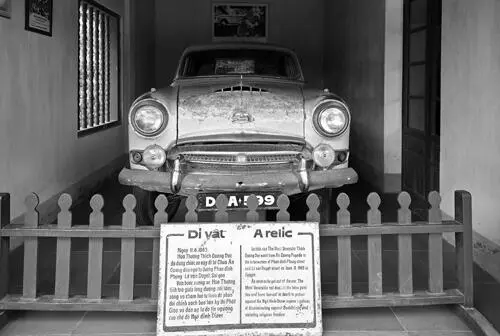
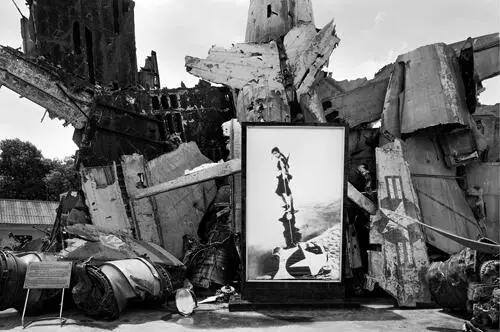
But one does have to visit Vietnam to see this other kind of memory, or else dig for it in books as a specialist or a hobbyist interested in this war. For casual encounters with the war, one is still most likely to see the past through the eyes of the air pirates or their inhuman prostheses, the drone and the satellite. This is the difference between a super-powerful industry of memory with a global reach that exports its products anywhere in the world, versus a middling industry of memory whose products stay within its own borders, or, when exported, are damned by poor reputations. A super-powerful industry of memory makes it easy for people to access its products, delivered to their doors, their televisions, their screens, their shelves, their newspapers, even when they do not want these memories or seek them out. Memory does not work this way for the weaker industrial power, which must either turn itself into a tourist destination to lure the unsuspecting tourist into mnemonic traps or export cheap products that few are likely to encounter or appreciate.
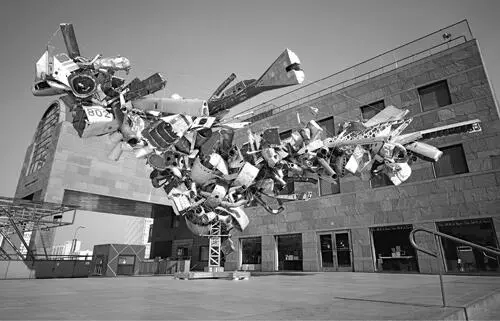
Nancy Rubins, Chas’ Stainless Steel, Mark Thomson’s Airplane Parts, about 1,000 lbs. of Stainless Steel Wire & Gagosian’s Beverly Hills Space at MOCA , 2002. ©Nancy Rubins. Photograph by Brian Forrest.
Director Dang Nhat Minh’s oeuvre illustrates this distinction between strong and weak industries of memory. He is the most famous auteur of the revolutionary generation, and his 1984 film When the Tenth Month Comes is likely the best-known Vietnamese movie or work on war and memory. Set in the years after American involvement, when Vietnam fought border clashes with Cambodia, and then invaded it, the movie tells the story of a young woman whose husband dies in one of these conflicts. Living with her father-in-law and young son, she keeps his death a secret, unable to break their hearts as her own has been. The movie is intimate, tender, and focused on the consequences of war for a woman and her family. Many Vietnamese war movies, unlike American ones, foreground women and children, although usually to emphasize their heroic, revolutionary spirit, like The Abandoned Field: Free Fire Zone . Unlike that film, in which a husband and wife fight off American helicopter attacks, heroism and noble sacrifice are absent in When the Tenth Month Comes . The prevalent mood is one of sorrow for the widow and her dead husband, who returns to her one night as a ghost. But no matter how pleasing or moving or full of human feeling, this is a black-and-white movie, the best that Vietnamese cinematic technology could do in 1984, the year when Beverly Hills Cop , a black and white buddy comedy shot in full color, topped the American box office. Except for the academic, the movie critic, the art house aficionado, and those with some deep abiding interest in this country, not many outside Vietnam watched When the Tenth Month Comes .
In 2009, Dang Nhat Minh made a bid for a larger international audience with the full color Don’t Burn , an epic film based on the diary of a young North Vietnamese woman, an idealistic doctor who volunteered for war and was killed by American troops. Instead of telling only Dang Thuy Tram’s story, Dang Nhat Minh also depicted the story of the American officer who recovered her diary and brought it back to her family more than thirty years later. Don’t Burn met the ethical demand to recognize both one’s own and others, although it was, perhaps, flawed, at least from my inhuman perspective. In standard biopic fashion, the film treated Dang Thuy Tram as a saint and cast amateurish white American actors, a move typical in Asian movies and television. Nevertheless, the movie deserved wider attention for doing what no other film had ever done, give equal screen time to Americans and Vietnamese. Unfortunately, the movie was released in Vietnam on the same weekend that Transformers 2 premiered. As the director noted ruefully: “We were crushed like a bicycle.” 4The metaphor is perfect: super-advanced transforming robots, starring in a movie where the human actors are inconsequential, destroy a movie that struggles to foreground the humanity of mutual enemies. Adding insult to injury, this crushing was done on home territory, where Vietnamese audiences prefer watching technically polished inhuman violence imported from abroad than a dramatically imperfect human story from home. These same Vietnamese people would, at the first opportunity, avail themselves of the most advanced mechanical transportation possible. By the millions beginning in the 1990s, they ditched the bicycle for the Honda Dream motorbike and now yearn for the automobiles at the heart of Transformers 2 . Whether one’s fantasy of the good life is the two-wheeled Honda Dream or the four-wheeled American Dream, both are fantasies of consumption, cyborg fantasies of being the human cog in an industrial machine.
The power of industry and the industry of memory may seem overwhelming when one rides a bicycle, dependent on physical strength and muscle memory. The bicycle, however, does not exist only to be crushed. Americans should heed the lessons learned by the French, also convinced of their own technological superiority. French generals amassed an army in the valley of Dien Bien Phu, hoping to tempt their enemies into a battle where they would be destroyed. What the French had not anticipated was the Viet Minh’s ability to haul artillery onto the heights of the mountains that surrounded Dien Bien Phu. But, piece by piece, up those mountains on bicycles pushed by human porters, the Viet Minh transported the artillery. This insurgent army, dependent on bicycles (as well as foreign weaponry), bombarded the French war machine into defeat. In the annals of decolonization and national self-determination, this legendary battle was matched only by the myth of David and Goliath, the original example of asymmetric warfare. An army always wants to be Goliath, but the world will often cheer for David.
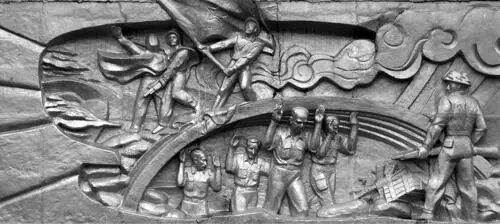
Thus the defeat of the French and the Americans has managed to stay in many people’s memories despite the victors not having access to powerful industries of memory. While the inhuman robots usually crush the human-powered bicycle, sometimes — rarely — the bicycle does win. In the case of the communist Vietnamese, they won partially because they fought the war on their own terrain. So much depends on terrain, including warfare and memory. Against the asymmetric warfare of an industrial giant deploying supersonic fighters, napalm, white phosphorous artillery shells, aircraft carriers, strategic bombers, herbicides, and helicopters equipped with so-called miniguns that could fire six thousand rounds per minute in a blaze of lightning and thunder — almost none of which the communist Vietnamese had, except for some fighters and missiles — the Vietnamese deployed the asymmetric warfare of guerilla insurgency. Asymmetry manifests itself mnemonically as well. Globally, the American industry of memory wins. People the world over may know the Vietnamese won the war, but they are exposed to the texture of American memory and loss via projected American memories. More importantly, the American industry of memory wins the matter of war memory even when its products do not concern the war. Obliterating most of the cinematic competition it faces, Transformers 2 —or 1 , or 3 , or 4 —performs crucial mnemonic work for American culture, distracting the world’s gaze from actual American wars through its own spectacular existence. Transformers 2 makes evident the backstory of the war and its aftermath — the triumph of inhuman capitalism, gloriously realized through the spectacle of massive machinery depicted by a cinema-industrial complex in thrall to a military-industrial complex. Together these complexes conquer new territories by inserting themselves into other countries via military bases, trade agreements, and movies, the twin-fisted punch of hard and soft power.
Читать дальше
